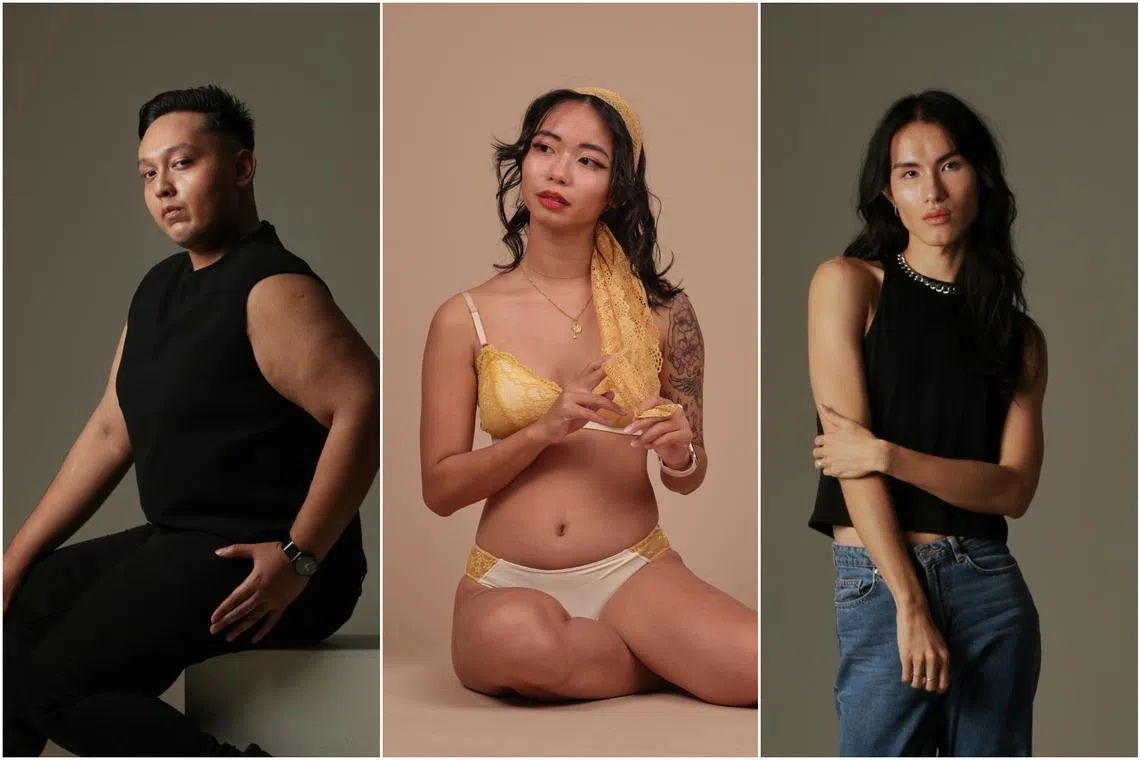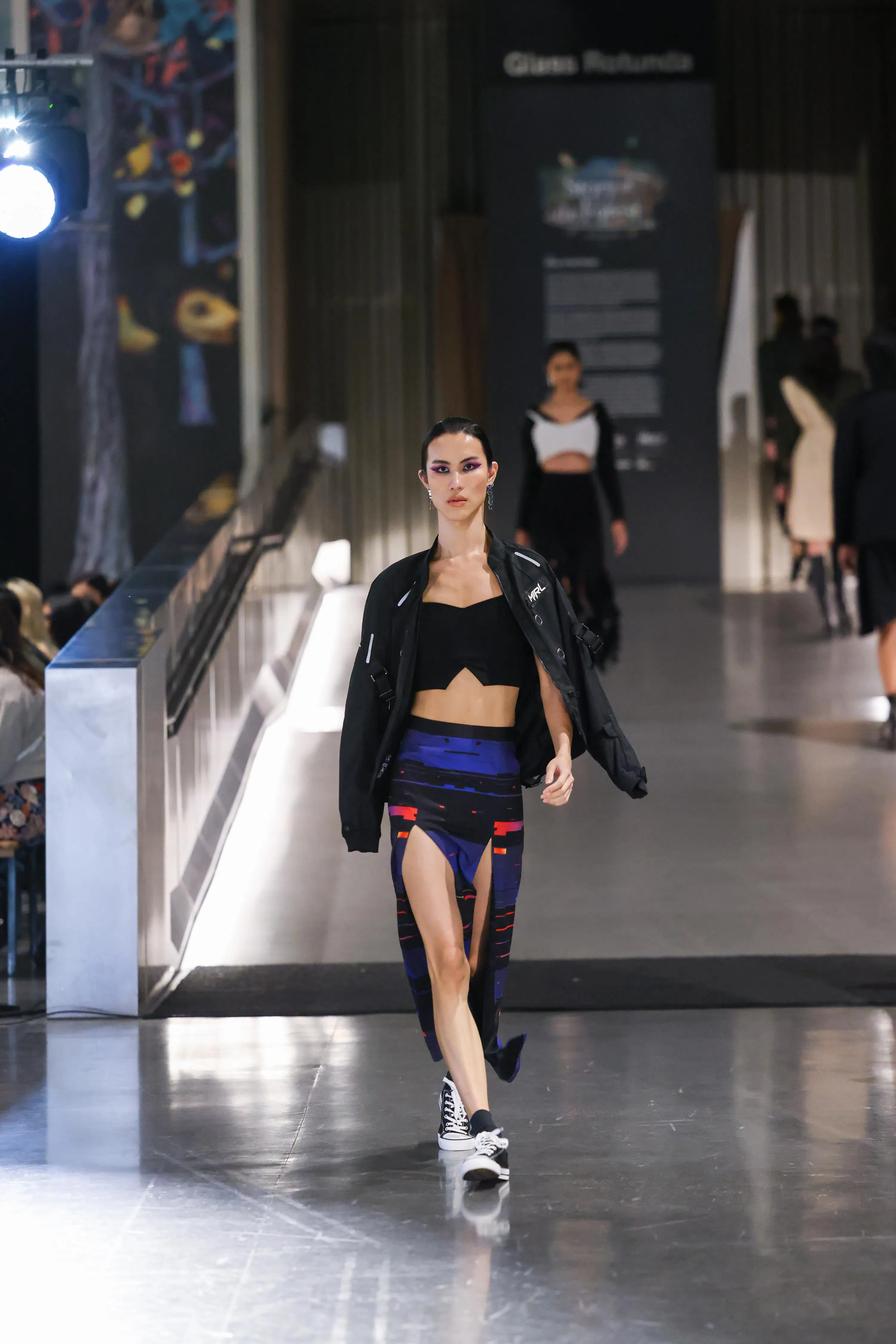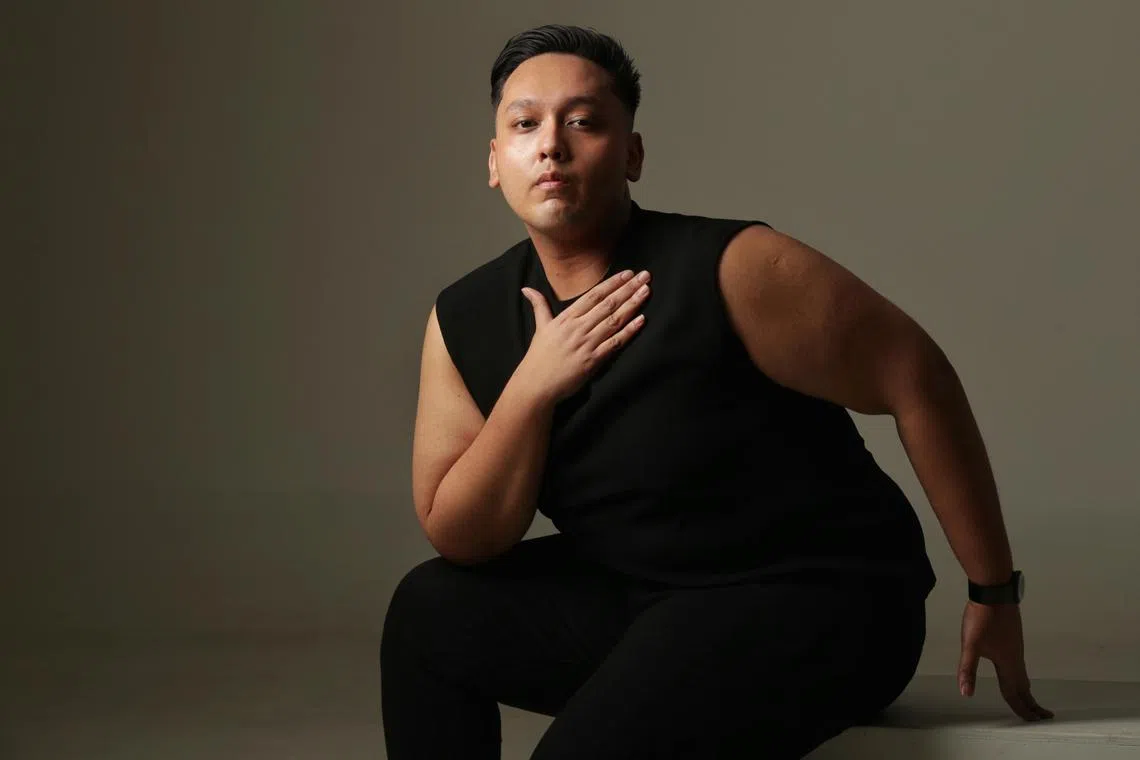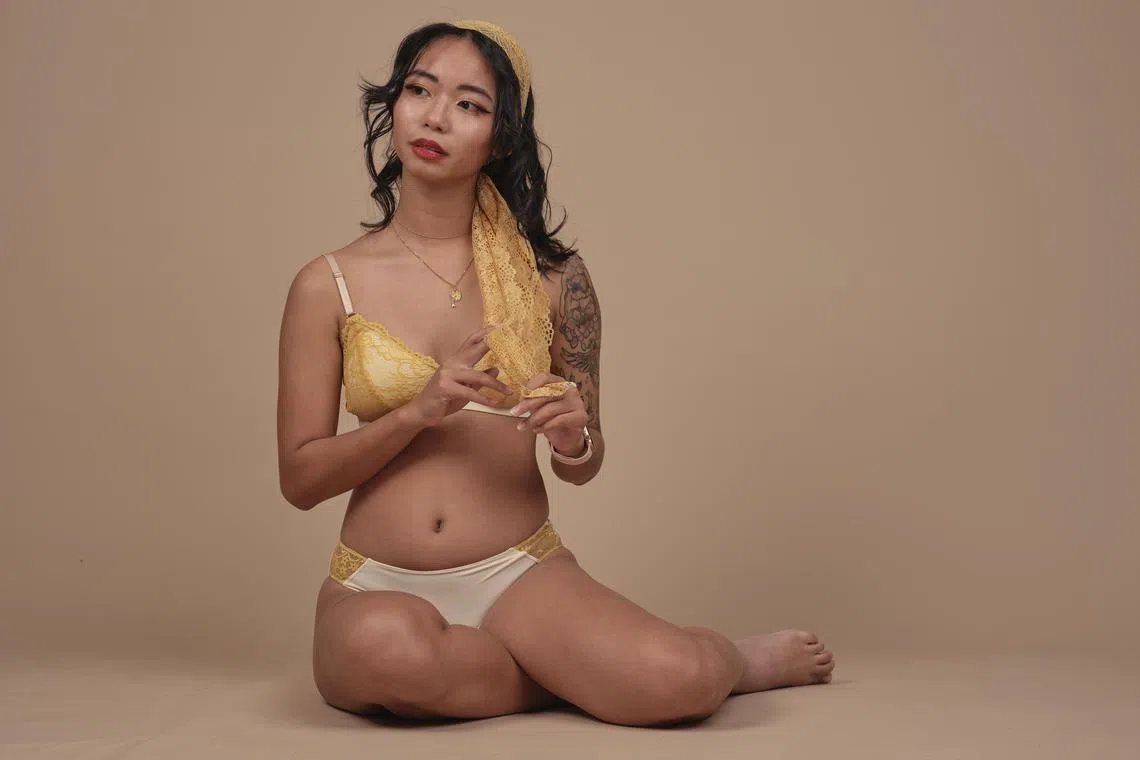Meet the inclusive Singaporean models who are blazing a trail
Sign up now: Get ST's newsletters delivered to your inbox

(From left) Farhan Hanis, Eilis O and Alley T.
PHOTOS: GIN TAY, OUR BRALETTE CLUB
Follow topic:
SINGAPORE – In a departure from their usual line-up, fashion brands are increasingly venturing beyond the token plus-sized female model and banking on a diverse cast of faces.
Inclusivity is now a crucial part of the modelling industry. And thanks to social media, the pushback against unrealistic beauty standards has grown more pronounced over the years.
The Straits Times speaks to some new faces who are redefining beauty in Singapore.
Alley T, 26, brand strategist and model

Model Alley T, 26, is one of Singapore’s most successful non-binary models to date.
PHOTO: FASHIONCONNECTS 2022
“I have never particularly identified with being male or female. It is something that I have always known about myself from a really young age. I realised I was different only when I went to an all-boys’ school.
When I was starting to explore my identity in my teens, I held on to the mantra ‘No one can make you feel inferior without your consent’ – a little cliched, but the quote by the former first lady of the United States Eleanor Roosevelt reminded me that what determines my value is not my looks or my gender expression, but how I put myself out there and the things I accomplish.
I was also really into fashion so, when I was 15, I pestered my dad to get me a sewing machine. I made clothes and dresses out of newspapers and old towels, and modelled the outfits.
A close friend told me I had potential, so I joined a modelling competition when I turned 16. The competition was divided into two categories: male and female. I brought my sister’s heels along and told the judges, ‘I can do both men’s and women’s runway. I could walk twice.’ They were taken aback because it was not an option 10 years ago to walk as a genderless model. Still, I found it really fun, and I’ve been modelling ever since.
Today, I am proud to have worked with major publications such as Vogue, Female, Elle and Men’s Folio. I really like the recent editorials I have done, where I am modelling both menswear and womenswear in different publications.
There was a period of time when my parents did not understand, but things are better now. My mum comes to me for styling tips.
It is interesting to see how the industry has evolved. When I first started modelling, it was difficult to find an agency that wanted to represent me, much less brands that wanted to work with me. I recently made the shortlist to model for a high jewellery brand, when before, I would not have been considered.
Probably the toughest thing, and something I am still working on, is the battle I have with myself. I used to actively censor myself or miss opportunities because I would think, ‘I’m not gonna get that, I’m not X enough or Y enough.’
It is also easy to fall into that thinking again when you are met with constant rejection.
But with the support of the industry and my agency Misc Management, it has been heart-warming to discover how important it is to take the first step and truly champion yourself.”
Farhan Hanis, 23, student and freelance model

Student Farhan Hanis 23, believes more can be done to include plus-sized men in fashion.
ST PHOTO: GIN TAY
“My weight has fluctuated since I was young. As a result, my wardrobe includes a variety of sizes, and I have sizes S to XL for just shirts.
People do comment on how I look. I got called names such as ‘Fat Boy’ when I was younger. The public has this perception that people like me are unhealthy, but this is not true – I used to participate in a lot of water and recreational sports.
I did try to lose weight by fasting and going on numerous diets. There was one silly diet I did, where I tried to reduce my water weight by drinking as little water as possible on top of dieting. Even then, I could go only to 68kg. I am now 107kg and my height is 1.81m.
Going to Kinokuniya to read magazines off the shelves was my escape from reality. However, I never saw myself represented in these magazines. I knew that change is needed someday.
Creative director Daniel Boey’s team asked if I would be interested in walking for FashionConnects 2022’s Catwalk with a Conscience in November, when I was shopping in Raffles City. As a commercial model previously, I have never done runway before. I was also much slimmer when I was a model – I’m three sizes bigger now. I was anxious at first, but I am glad I did it.
People are becoming more receptive about the idea of body positivity in the late 2010s, since this subject is now more prevalent on social media. Plus-sized male models such as Zach Miko, Raul Samuels and Cristian Paris have inspired me to step out of my comfort zone.
We see plenty of plus-sized female models, but not men. As toxic masculinity reigns, plus-sized men are not considered worthy enough to be in fashion or deemed as desirable. I believe it will take some time for Singapore to catch up with this image shift.
Though I am not signed with any agency at the moment, I hope that someday, I will see someone like myself represented. In the meantime, I am focusing on my health, eating balanced meals and exercising two to three times weekly. I’m also much happier now than I was before.”
Eilis O, 22, student and freelance model

Petite model Eilis O has grappled with body image issues since she was young.
PHOTO: OUR BRALETTE CLUB/FELIX LUA
“I think most women, regardless of size, face constant body scrutiny. As a petite person, I used to get bombarded with well-intentioned, but somewhat insensitive, advice to eat more.
I was not confident back in school. Whenever someone whipped out a camera, such as during birthday parties or school events, I would try to shy away and offer to take the photo instead. I felt like I metaphorically shrunk myself in every photo, just hoping that somebody else would be able to cover me.
I struggled with anorexia for years. Extended family would describe my body as pi bao gu (loosely translated to “skin covering bones”) and made similar comments almost every time I visited them for events such as Chinese New Year.
I began modelling when I was about 18. At 1.59m tall, I am below the industry standard in height for female models, which is typically over 1.7m.
At the time, I was beginning to recover from my eating disorder. I now weigh 50kg.
I started modelling because Our Bralette Club posted a call for models. I was a huge fan of the brand’s beliefs, and wanted to support and be part of it. I appreciated how the brand embraced and championed body positivity, and a part of me was hoping that modelling for them would imbue those values onto me as a recovering anorexic.
Whenever I look back at old photos, I can see my confidence blossom in my body language, from being closed off to being comfortable in my own skin on camera.
A common critique of the body positivity movement is that it seemingly promotes unhealthy behaviours, just because the movement celebrates all body types and sizes, including those that are overweight or obese. Yet, the same criticism is not applied to unhealthily skinny bodies, even though being dangerously underweight is also a health risk. At this point, our society pushes women into shrinking, and celebrates underweight bodies because that is the beauty standard that has been commonly accepted.
I always look up to people who are just so unapologetically themselves, taking up space and not dampening any part of themselves down, and who speak out on things that matter to them. To quote Brooklyn Nine-Nine (2013 to 2021), one of my favourite TV shows: “Every time someone steps up and says who they are, the world becomes a better, more interesting place.’”

